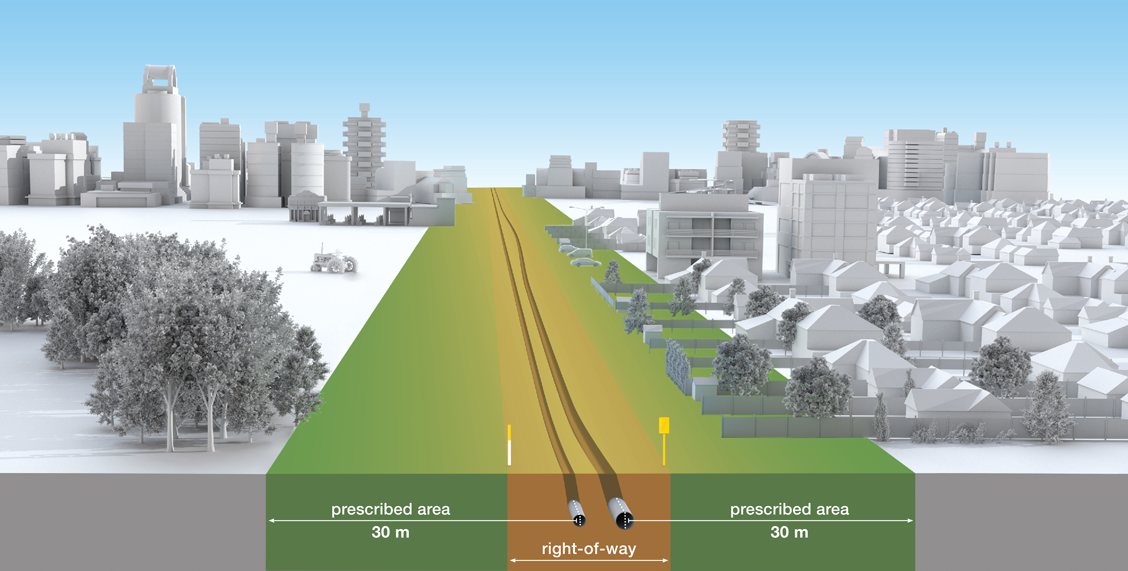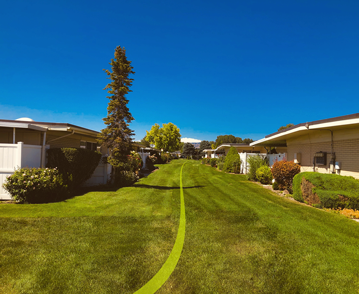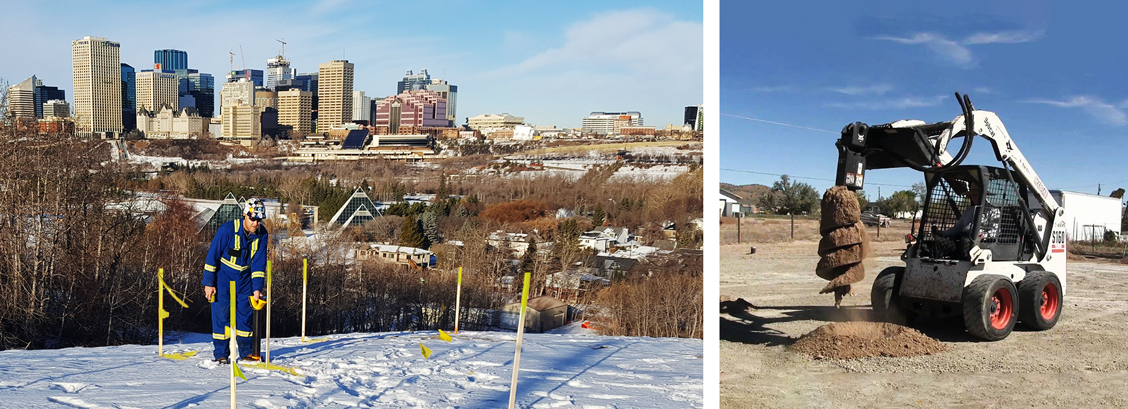Living and Working Near Pipelines
Living and Working Near Pipelines [PDF 2739 KB]
Pipelines Where You Live and Work

The CER takes action to protect Canadians and the environment. We regulate natural gas, oil, and commodity pipelines that extend beyond provincial, territorial or national boundaries. Unauthorized activities on or around these pipelines are unsafe and illegal. If pipelines are damaged, the result could be very serious.
Facts about pipelines
Pipeline marker signs only show a pipeline is in the area. You must get a locate from the company to know the exact location of a pipeline.
You need a new locate when:
- your project goes outside the limits of your first locate
- the One Call ticket has expired
- the locate marks and flags are gone
The amount of ground cover over the pipeline can be shallower in some places than others due to erosion, terrain, human activity, and other factors.
Provincially regulated buried pipes and cables may be closer to the surface than federally regulated pipelines.
Even if there is no sign, a pipeline (or other buried pipes and cables) could be present in your intended work area.
Why would you need to click or call before you dig
If you don’t click before you dig and locate the buried pipes and cables in your work area, you could cause:

- damage to buried pipes and cables
- utility service disruptions and expensive repair costs
- potential rupture, fire, release of product from the pipeline
- environmental damage
- injury or death
- regulatory penalties
How to resolve disputes with the pipeline company
If you and the pipeline company cannot reach an agreement:
- you or the pipeline company can contact the CER for assistance
- the CER offers an Alternative Dispute Resolution service, a voluntary way to resolve disputes
Working Near Federally Regulated Pipelines

- Don’t just dig. Plan ahead. Look for pipeline marker signs at the site. It takes time to locate the pipes and cables and to get written consent, if needed.
- Get written consent from the pipeline company before any ground disturbance 30 cm (12 in) or deeper in the prescribed area.
- Contact Click Before You Dig or a one-call centre to have the underground pipes and cables located. In the Territories, contact the pipeline company or utility owner directly. You may need to be on site when the technician comes.
- Know the meaning of the pipeline markings. Be on site when the pipe is located to get the safety information in person if you can.
- You must give everyone doing work on your behalf the safety information they need: contractors, subcontractors, family members, volunteer helpers, and employees.
- Federally regulated pipeline companies must respond to a locate request in 3 business days.
Ground Disturbances in the Prescribed Area
You can only dig to certain depths in the prescribed area without consent from the pipeline company. Contact the pipeline company if the depth meets or exceeds what's shown on the graph below.

Conventional activities
Less than 30 cm deep: do not need pipeline company’s consent
30 cm or deeper: must get the pipeline company’s consent
Agricultural activities
Less than 45 cm deep: do not need pipeline company’s consent
45 cm or deeper: must get the pipeline company’s consent
- Date modified:
